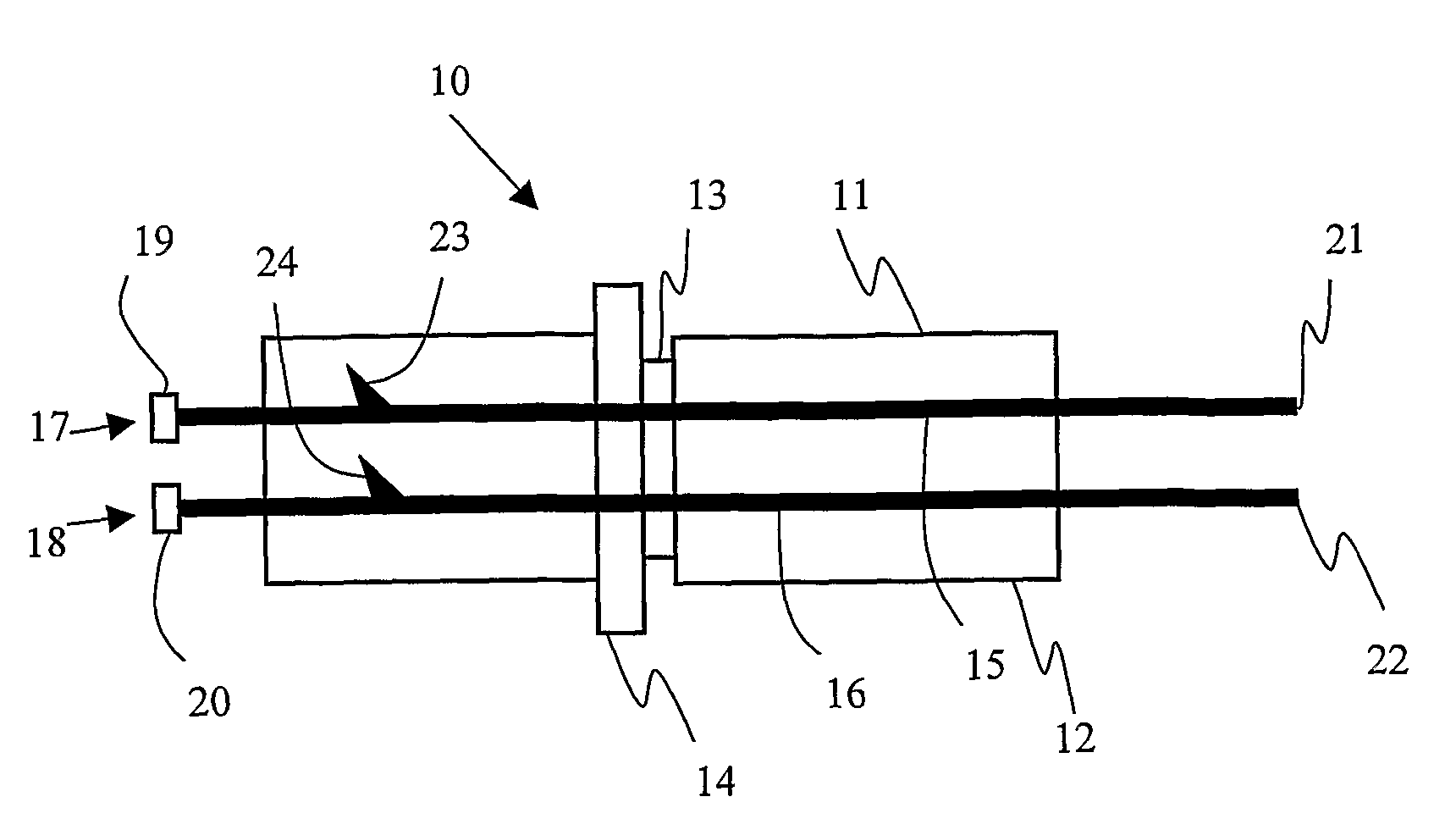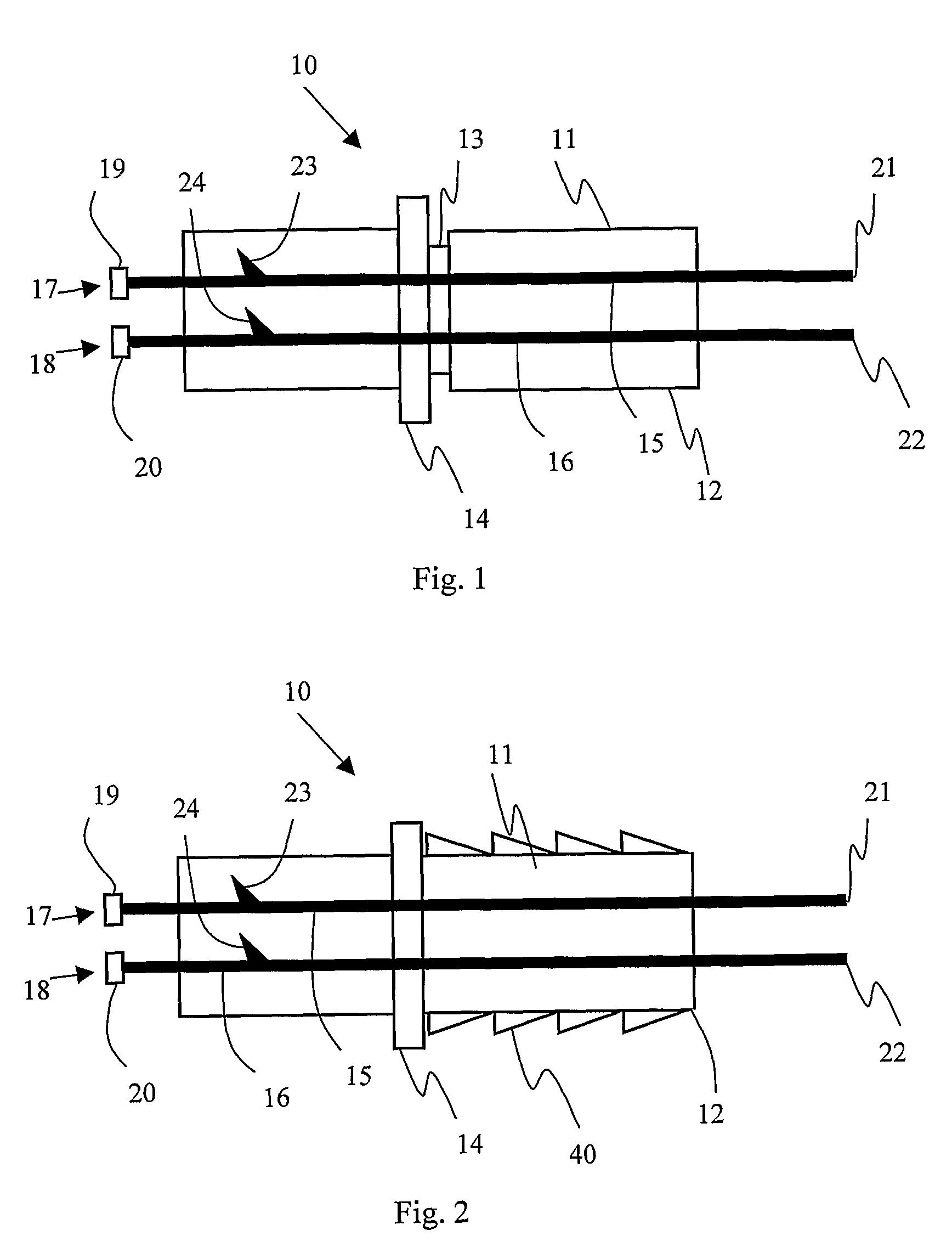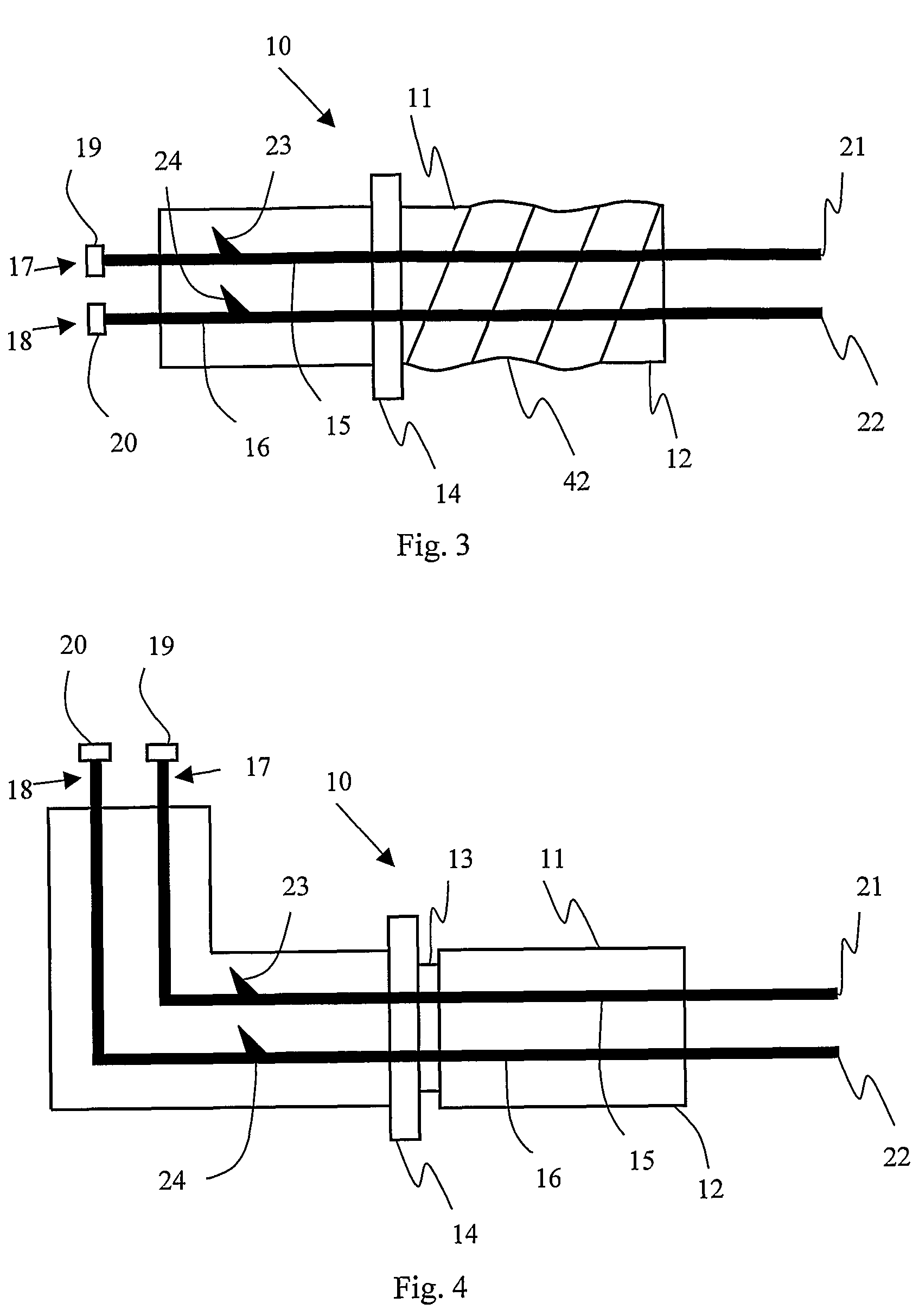Connector for electronic detonators
a technology of electronic detonators and connectors, which is applied in the direction of electrical fuzes, coupling device connections, ammunition fuzes, etc., can solve the problems of imposing considerable load strains on detonator/signal transmission line contacts, prone to disruption of electronic detonators and associated signal transmission lines, and unavoidable degree of load
- Summary
- Abstract
- Description
- Claims
- Application Information
AI Technical Summary
Benefits of technology
Problems solved by technology
Method used
Image
Examples
Embodiment Construction
[0077]The present invention provides, at least in preferred embodiments, for an electrical connector for securing a signal transmission line to a detonator, or at least to one or more initiation components of a detonator. Preferably, the connector may form part of a modular-type electronic detonator apparatus, wherein signal transmission lines are connected to electronic detonators at the blasting site, rather then in the factory setting. In this way, the connector of the present invention presents multiple advantages. The principle advantage pertains to the secure connection of the signal transmission line to the electronic detonator, which substantially prevents breakage of the corresponding connections when a tugging or tensile force is applied to the signal transmission line. Preferred embodiments of the invention exhibit further advantages, which include but are not limited to: the suitability of the connector to generate simple modularized detonator systems, and the capacity o...
PUM
 Login to View More
Login to View More Abstract
Description
Claims
Application Information
 Login to View More
Login to View More - R&D
- Intellectual Property
- Life Sciences
- Materials
- Tech Scout
- Unparalleled Data Quality
- Higher Quality Content
- 60% Fewer Hallucinations
Browse by: Latest US Patents, China's latest patents, Technical Efficacy Thesaurus, Application Domain, Technology Topic, Popular Technical Reports.
© 2025 PatSnap. All rights reserved.Legal|Privacy policy|Modern Slavery Act Transparency Statement|Sitemap|About US| Contact US: help@patsnap.com



